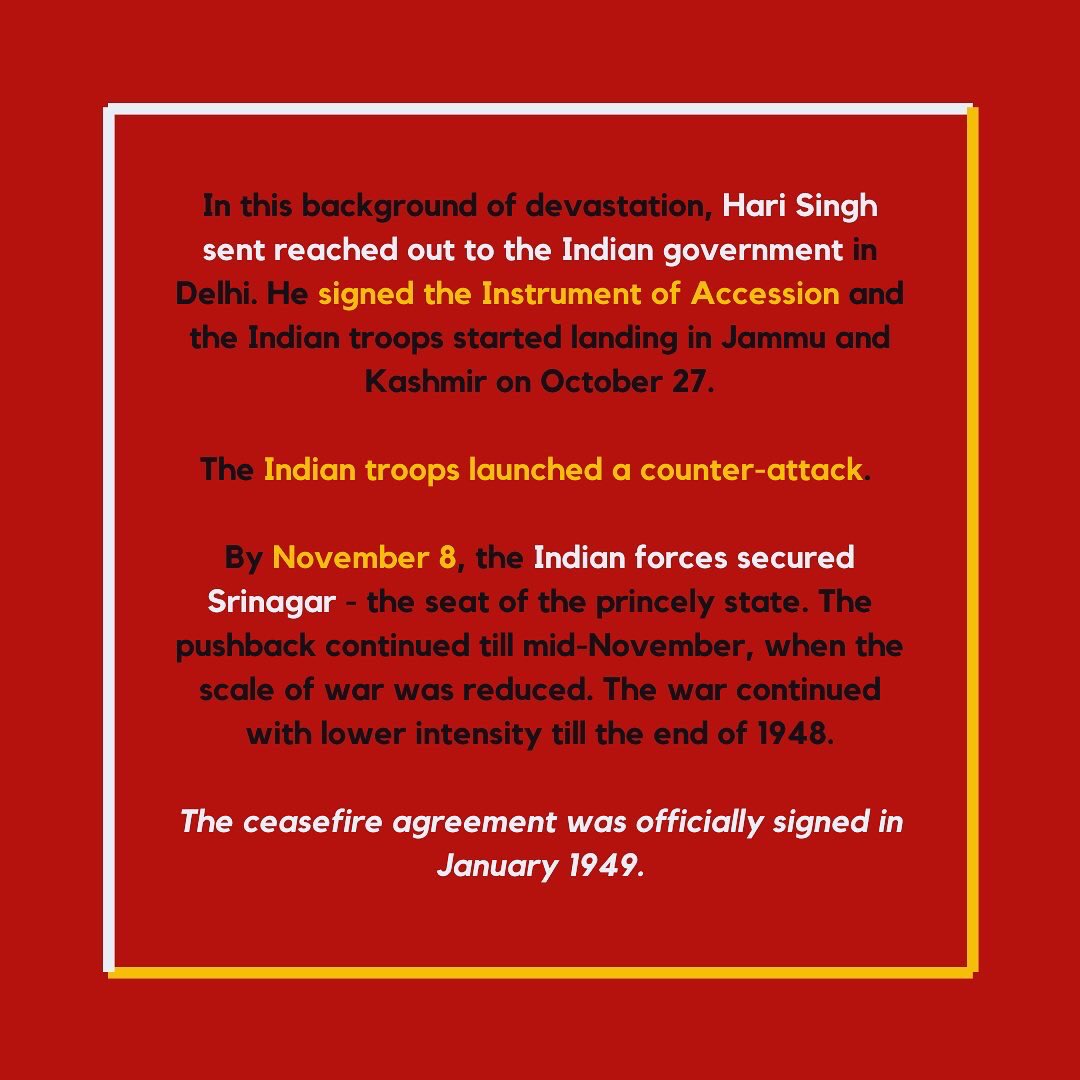
TW: Violence & Assault
73 years ago today, Kashmir was invaded, attacked, raped, and devastated by the newly created Pakistani state and their allies. SAHF put together this thread in remembrance of this tragic invasion and its victims. Swipe Through!
73 years ago today, Kashmir was invaded, attacked, raped, and devastated by the newly created Pakistani state and their allies. SAHF put together this thread in remembrance of this tragic invasion and its victims. Swipe Through!

On October 22, 1947, Pakistani Army regulars and tribal raiders invaded Kashmir in a bid to forcibly annex the territory just months after independence. The Pakistani Army code-names this assault ‘Operation Gulmarg’. 

Their invasion resulted in large-scale atrocities being committed against the Kashmiri people, including looting, rape, murder, & hospital attacks. Many heroes of the Kashmiri resistance against this invasion by Pakistan, including Shahid Maqbool Sherwani, were killed by raiders. 

During the invasion, outposts manned by the ruler of Kashmir’s forces where overrun by thousands of mercenaries & Pakistan Army regulars in Muzaffarabad and other locations, all in an ultimate bid to forcibly capture the capital of Kashmir, Srinagar, and annex invaded territory. 

This invasion compelled the ruler of Kashmir, Maharaja Hari Singh, to sign an Instrument of Accession to India, which allowed for Indian troops to launch a counter-attack, secure Srinagar, and continue the effort to repel the invasion as Kashmir legally ascended to India. 

• • •
Missing some Tweet in this thread? You can try to
force a refresh












